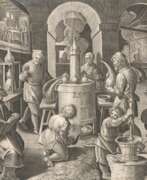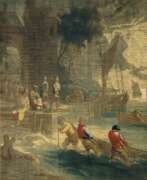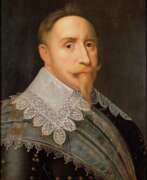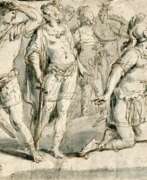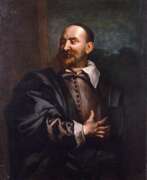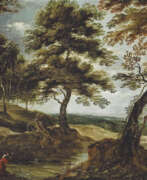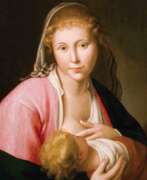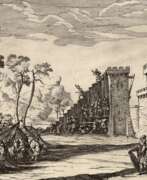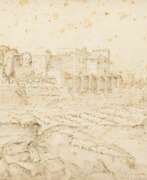Draftsmen Flanders
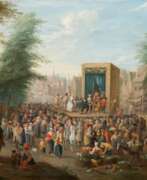

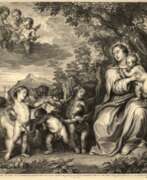

Schelte Adamsz Bolswert was a leading Dutch engraver, noted for his works after Rubens and Van Dyck. Both he and his older brother, Boetius à Bolswert, worked in Amsterdam and Haarlem before settling in Antwerp. For the last five years of his life Boetius worked exclusively on engravings after Rubens. Bolswert's plates were worked entirely with the graver, and he does not seem to have made any use of the drypoint. The freedom which this excellent artist handled the graver, the picturesque roughness of etching, which he could imitate without any other assisting instrument, and the ability he possessed of distinguishing the different masses of colours, have always been admired by the conoisseurs".
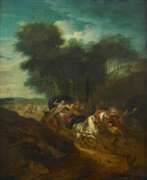

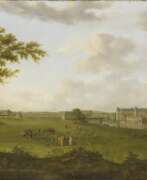

Hendrik Frans de Cort was a Flemish landscape painter and draughtsman. In 1770 he became a master in the Antwerp Guild of Saint Luke. His early landscapes from the time before he moved to England were often made in collaboration with other Flemish artists. De Cort is known for his topographical views of English and Welsh landscapes. These were painted in an Italianate idiom indebted to the style of Gaspar Dughet. He often painted on specially prepared mahogany panels.
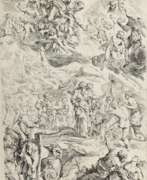

Franz Ertinger (German: Franz Ertinger) was a French painter born in Germany but working in France and Flanders, a member of the Guild of St. Luke in Antwerp.
Ertinger is a versatile artist who has applied his talents in various fields of art. He is known as a painter, illustrator and printer of books, draughtsman, designer and writer, and worked as a royal engraver in Paris.
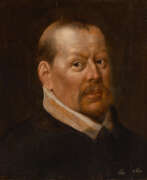

Frans Floris de Vriendt the Elder was a Flemish painter and engraver of the 16th century.
The artistic style of Frans Floris was strongly influenced by the Italian Renaissance. He combined elements of Italian mannerism with his own interpretation, creating a distinctive style characterized by attention to detail, vivid colours and dynamic compositions.
Frans Floris was known for his large-scale historical and mythological paintings, which often depicted complex subjects and included many figures. His works demonstrated his ability to create dramatic and evocative scenes, exploring themes of religion, mythology and human emotion.


Jacques Fouquières, an eminent Flemish landscape painter active in the early 17th century, was celebrated for his detailed and atmospheric landscapes. Born around 1580 and active mainly in France, Fouquières's artistry flourished in a period rich in landscape painting. His style was heavily influenced by the Northern style prevalent during the late 16th and early 17th centuries, characterized by wide, panoramic landscapes with craggy rocks and a blue-greenish palette.
Fouquières's work was not just confined to painting; he was also a skilled draughtsman. His early works, like the "Winter Landscape" of 1617 in the Fitzwilliam Museum, showcase the influence of artists such as Joos de Momper, Jan Brueghel the Elder, Adriaen van de Venne, and Hendrick Avercamp. This particular painting is notable for its portrayal of a cold, wintry scene, exhibiting a mastery of the Northern landscape tradition. However, in his 1622 Forest Landscape, now in the Wallraf–Richartz Museum, Fouquières broke from this tradition, opting for narrower focuses and darker, more concentrated depictions of trees.
One of his notable works, "Landscape with ruins, people and animals," is preserved in The Metropolitan Museum of Art. This piece exemplifies Fouquières's talent in creating engravings, a medium that allowed him to capture intricate details of landscapes and everyday life.
His legacy extends beyond his works; he was a teacher to notable artists like Philippe de Champaigne and Matthieu van Plattenberg. Despite the success in his early career, his life ended in relative poverty, as evidenced by the modest inventory of his estate.
For collectors, auctioneers, and experts in art and antiques, the works of Jacques Fouquières represent a significant period in the history of landscape painting. His contributions to the art world during a pivotal era in European art history continue to be celebrated and studied.
If you have a keen interest in Jacques Fouquières's works or wish to stay informed about sales and auctions of his art, subscribing to updates would be beneficial. This will ensure you receive timely information about new sales and auction events related to his art.
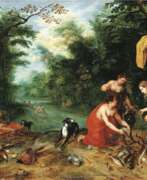

Jacob Grimmer was a Flemish painter who was active during the Late Renaissance. He specialised in landscapes and genre scenes, often depicting the everyday life of peasants.
His style was strongly influenced by Pieter Bruegel the Elder and the works of Leonardo da Vinci and Raphael.
Grimmer's paintings are characterized by detailed, realistic depictions of nature. His landscapes are characterized by wide expanses and intricate detail.
Jacob Grimmer was known for his ability to capture the nuances of human behaviour, so his genre works depict the lives of peasants with a touch of humour and whimsy.


Livio Mehus, née Lieven Mehus, was a Flemish and Italian Baroque painter, draughtsman, and printmaker.
Mehus lived and worked most of his life in Florence, painting allegories, battle scenes and landscapes, portraits and self-portraits.
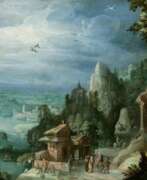

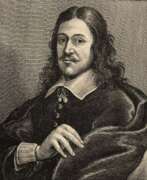

Bonaventura Peeters the Elder was a prominent Flemish painter, draughtsman, and etcher specializing in marine art during the 17th century. His extensive body of work encompassed marine battles, storms at sea, shipwrecks, and views of ships in rivers and harbours.
Peeters displayed a keen understanding of ships, capturing their intricate details. His earlier works exhibited tonal landscapes influenced by Dutch painting, while later pieces reflected vibrant colors inspired by Italian classicism. He skillfully depicted dramatic shipwrecks, serene ports, and intricate portrayals of ships. Many of his paintings depicted actual locations along the North Sea and the river Scheldt, while others showcased imagined scenes of far-away Mediterranean and Middle Eastern ports. Peeters also collaborated with family members and fellow artists, and his drawings and engravings were included in notable publications like Blaeu's Atlas Maior.
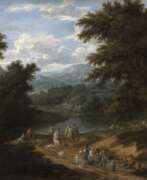

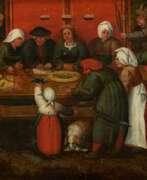

Marten van Cleve the Elder was a Flemish painter and draftsman active in Antwerp between 1551 and 1581. Van Cleve is mainly known for his genre scenes with peasants and landscapes, which show a certain resemblance with the work of Pieter Bruegel the Elder. Marten van Cleve was one of the leading Flemish artists of his generation. His subjects and compositions were an important influence on the work of Pieter Brueghel the Younger and other genre painters of his generation.
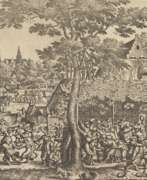

Pieter van der Borcht the Elder was a Flemish Renaissance painter, draughtsman and etcher. He is regarded as one of the most gifted botanical painters of the 16th century. Pieter van der Borcht the Elder also introduced new themes such as the 'monkey scene' (also called 'singerie') into Northern art.
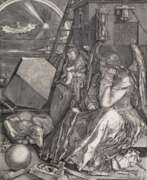

Johannes (Jan) Wierix was a Flemish engraver, draughtsman, and publisher. He was a very accomplished engraver who made prints after his own designs as well as designs by local and foreign artists.
Together with other members of the Wierix family of engravers he played an important role in spreading appreciation for Netherlandish art abroad as well as in creating art that supported the Catholic cause in the Southern Netherlands. Johannes Wierix is also known for his miniature pen drawings.


